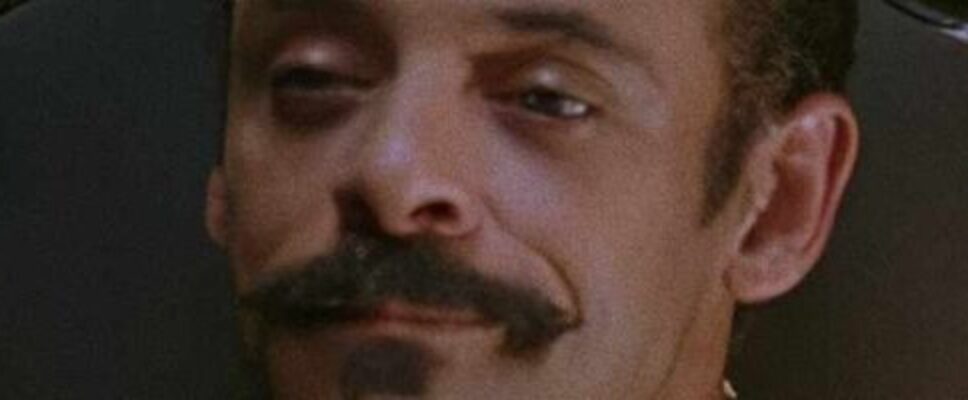Teresa Reviews “Cards on the Table” (2006)
Teresa reviews “Cards on the Table” (2006) and thinks they swapped decks in the middle of the production, making jokers out of us.
Fidelity to text: 2½ stilettos
 The first two-thirds follows the text closely. Afterwards? This deck got reshuffled with another, mis-matched deck.
The first two-thirds follows the text closely. Afterwards? This deck got reshuffled with another, mis-matched deck.
Quality of movie on its own: 2½ stilettos



Read more of Teresa’s Agatha Christie movie reviews at Peschel Press.
Also, follow Teresa’s discussion of these movies on her podcast.

When he discovers Shaitana’s murder, Superintendent Battle enlists Poirot, Col. Race, and more grudgingly, Ariadne Oliver’s assistance to solve the mystery. No fingerprints, no witnesses, but each of the suspects had a shady past. Poirot uses psychology and a close evaluation of the bridge scores to deduce whodunnit.
With two exceptions, the first two-thirds of the film follows the novel, allowing for the usual compression of plot and removal of minor characters.
For the adaptation, Superintendent Battle must have deduced what was in store for him so he retreated back into obscurity in Scotland Yard, leaving Superintendent Wheeler to take his place. Wheeler is revealed at the climax as not just a typical superintendent. Despite mentioning several times he’s a family man, he’s been carrying on a clandestine gay love affair with Mr. Shaitana and, maybe, other men. He’s also remarkably stupid: he let Shaitana photograph the trysts. I couldn’t accept that a supposedly brilliant member of Scotland Yard would be idiotic enough to allow blackmailing pictures taken. Doesn’t he read his own case studies?
Colonel Hughes replaced Colonel Race, apparently because the actor who previously played Race in Death on the Nile (2004) was unavailable. The producers could have recast the part; it’s done all the time. But they didn’t, demonstrating that verisimilitude to plot was unimportant. Think of it as a warning for what’s to come.
The other, early changes made sense. We open at the art exhibit. Poirot is studying the modern sculpture, Ariadne in tow, when they run across Mr. Shaitana. Agatha chose his name very carefully. In Hindi, Shaitaan means devil. Mr. Shaitana dresses to accentuate his resemblance to Mephistopheles. His other resemblance to the devil is that Mr. Shaitana collects murderers who got away with it. Not for him the common Black Museum object such as a killer’s dagger or the hangman’s noose. Mr. Shaitana enjoys toying with people, divining their secrets, and watching them squirm.


He mentions his hobby to Poirot and invites him to dinner. Poirot disapproves as it’s dangerous to poke tigers with sharp sticks but he attends anyway. At dinner, Poirot discovers that the other guests can be divided into two categories. Representatives of law and justice (himself, Ariadne representing mystery writers, Superintendent Wheeler, and Col. Hughes) and upstanding citizens with shady pasts. Shaitana prods his guests with pointed remarks about poisonings, accidental deaths, and the like. It’s an uncomfortable meal, particularly for Anne Meredith. She’s a mousy brunette, dressed in virginal white. The other three suspects — Dr. Roberts, Major Despard, and Mrs. Lorrimer — take it in stride.


The plot soon starts to go off the rails, first in small ways and then in large. Poirot, Wheeler, and company begin by interviewing everyone. How each suspect met Shaitana is shown as evocative flashbacks.


Dr. Roberts murders Mrs. Craddock, but not her husband (who never appears onscreen). She had to die but Roberts isn’t covering up loose ends from their torrid affair, the one her husband objected to as in the novel. No, Dr. Roberts was conducting an affair with Mr. Craddock, infuriating Mrs. Craddock. She’d reveal all and ruin him. This was a much bigger change but within reason. Homosexuality was illegal then. Revealing this would have destroyed Roberts’ career and probably earned him jail time.
Mrs. Lorrimer is gradually revealed to have murdered her husband by shoving him down a flight of stairs in front of their horrified daughter. The novel tells us nothing about Mrs. Lorrimer’s past, only that she poisoned her husband. That’s a minor change too.
The major change is that the horrified daughter turns out to be Anne Meredith! That gives Mrs. Lorrimer a plausible reason to insist that she stabbed Shaitana. She’s trying to protect Anne from prosecution and to make amends to her daughter for killing her father. Why would she protect Anne? Because Mrs. Lorrimer saw Anne bending over Shaitana.
Anne Meredith got the most changes. She’s still an awkward, nervous damsel with a shady past. She’d been earning her living as a mother’s helper and companion. Her roommate – who’s paying the bills – is Rhoda Dawes. Rhoda wants Anne to admit that an accidental poisoning took place where Anne used to work. The old lady drank silver polish by mistake. Anne was an innocent bystander. Wasn’t she?
Major, major change. Not only was Anne innocent of poisoning the old lady, it was Rhoda’s crime! Rhoda knew Anne would be sacked for thieving (Anne’s still a petty thief), so she substituted the bottle and poisoned her aunt. Why? So she and Anne could continue carrying on their torrid lesbian affair! Rhoda likes keeping Anne under her thumb as her slave.




Who didn’t merely arrange a dinner party of murderers and sleuths. Oh no. Mr. Shaitana drugged his own drink so he’d fall asleep in a roomful of murderers, hoping that one of them would take the bait and kill him. He set everyone up so he could commit suicide yet have someone else do the dirty work.
At that, you’ll throw your popcorn at the screen. Bleah.

